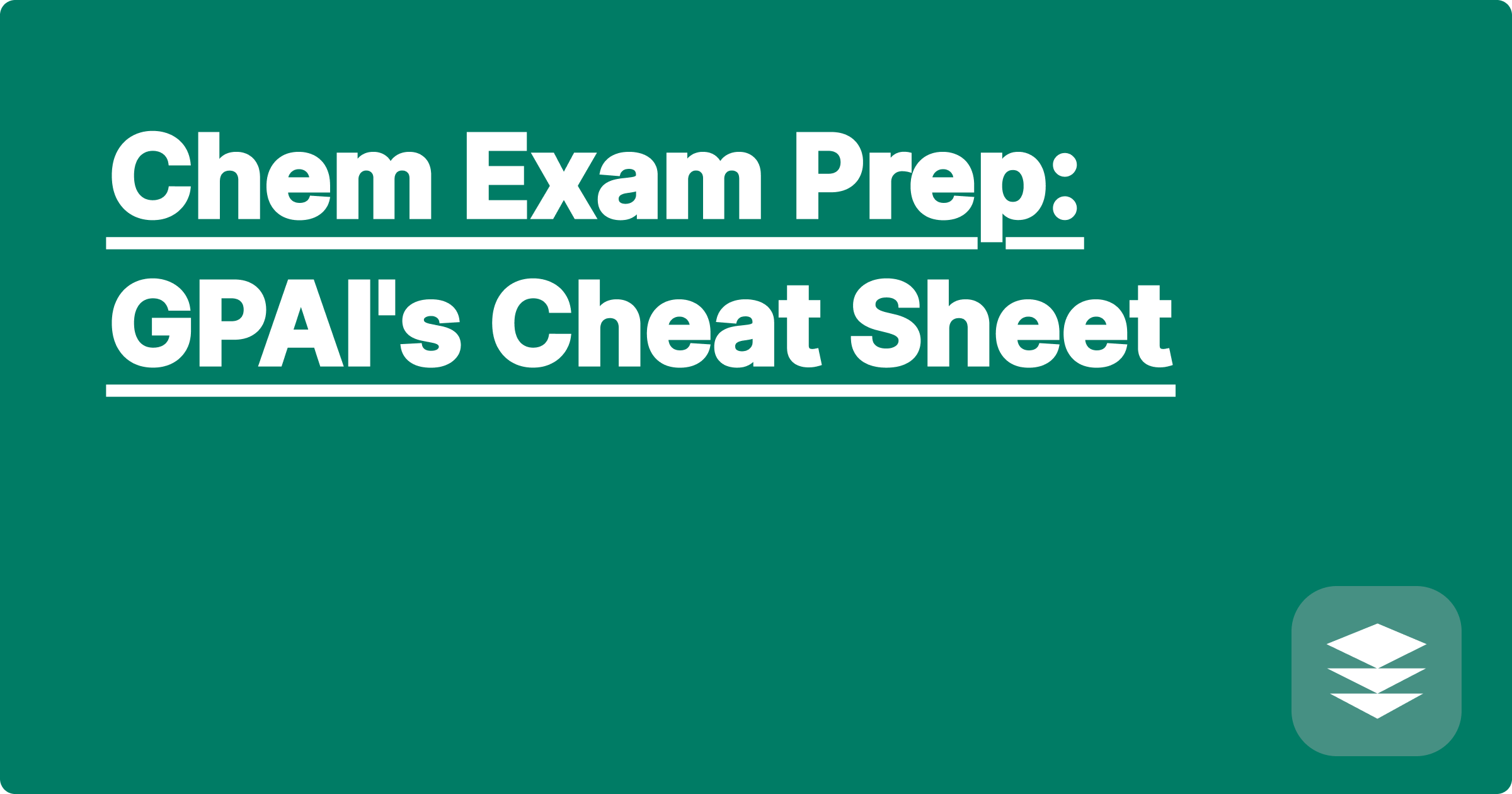
STEM fields, particularly chemistry, often present a formidable challenge for students: mastering complex concepts and applying them effectively in exams. The sheer volume of information, intricate reactions, and nuanced theories can feel overwhelming. Fortunately, the rise of Generative Pre-trained Transformer (GPT) models and other AI tools offers a powerful new approach to tackling these challenges, providing personalized learning experiences and sophisticated study aids.
For STEM students and researchers, effectively leveraging these AI tools can be transformative. It's no longer just about memorizing facts and formulas; it’s about understanding the underlying principles and developing problem-solving skills. AI can help bridge the gap between rote learning and genuine comprehension, enabling students to approach exams with confidence and researchers to explore complex scientific questions more efficiently. This shift in learning paradigm is crucial for success in the increasingly demanding landscape of STEM education and research.
Chemistry, as a core STEM discipline, encompasses a vast body of knowledge ranging from atomic structure and molecular interactions to reaction kinetics and thermodynamics. Students often struggle to integrate this information into a coherent framework, leading to difficulties in applying it to novel problems encountered in exams. Traditional study methods, such as reading textbooks and reviewing notes, can be passive and inefficient, failing to engage students actively with the material. Furthermore, the abstract nature of many chemical concepts can make it challenging for students to visualize and internalize them. This disconnect between theory and application is a major obstacle for many aspiring chemists. Understanding reaction mechanisms, balancing chemical equations, and predicting reaction outcomes require not just memorization, but also a deep understanding of the underlying principles. This is where AI tools can step in and provide valuable support.
AI tools like ChatGPT, Claude, and Wolfram Alpha offer a dynamic and interactive approach to chemistry exam preparation. These platforms can be used to generate practice questions, provide detailed explanations of complex concepts, and even simulate laboratory experiments. ChatGPT and Claude, for instance, can be prompted to explain specific reaction mechanisms, provide examples of different types of chemical reactions, or even generate practice quizzes tailored to specific topics. Wolfram Alpha excels at computational tasks, allowing students to quickly calculate molar masses, balance chemical equations, and perform other complex calculations. By combining these tools, students can create a personalized learning experience that addresses their individual needs and weaknesses.
To begin using AI for chemistry exam prep, start by identifying the specific topics you find most challenging. Then, formulate clear and concise prompts for the AI tool you've chosen. For example, if you’re struggling with redox reactions, you might ask ChatGPT to “Explain the concept of oxidation and reduction with examples” or “Generate five practice problems involving balancing redox reactions.” Once the AI generates a response, carefully review the information provided and ask follow-up questions to clarify any remaining doubts. You can also use Wolfram Alpha to verify calculations or explore related concepts. This interactive process helps solidify your understanding and build confidence. Remember to actively engage with the material by working through the examples and practice problems provided by the AI. This active learning approach is far more effective than passively reading or reviewing notes.
Suppose you are struggling with understanding the concept of Le Chatelier's principle. You could ask ChatGPT to "Explain Le Chatelier's principle with an example involving the Haber-Bosch process." The AI might then provide an explanation of the principle and describe how changing the pressure or temperature affects the equilibrium of the Haber-Bosch process, which is the industrial synthesis of ammonia (N2 + 3H2 ⇌ 2NH3). Wolfram Alpha can then be used to calculate the equilibrium constant (Kc) at different temperatures, further solidifying your understanding of the principle's practical application. Another example could involve organic chemistry. You could ask ChatGPT to "Explain the mechanism of an SN1 reaction with an example." The AI can then provide a step-by-step explanation of the reaction mechanism, including the formation of a carbocation intermediate.
To maximize the benefits of AI in your chemistry studies, it's crucial to develop effective learning strategies. Don't rely solely on the AI for answers; instead, use it as a tool to guide your learning and deepen your understanding. Actively engage with the material by asking questions, working through examples, and testing your knowledge. Combine AI-powered learning with traditional study methods, such as reading textbooks and attending lectures, to create a comprehensive learning experience. Furthermore, remember that AI is a tool, not a replacement for critical thinking and problem-solving skills. Use AI to supplement, not supplant, your own learning efforts. By adopting a proactive and strategic approach, you can harness the power of AI to achieve academic success in chemistry and beyond.
In conclusion, AI tools offer a powerful new approach to chemistry exam preparation, providing personalized learning experiences and interactive study aids. By understanding how to effectively leverage these tools, STEM students and researchers can transform their learning process, improve their understanding of complex concepts, and achieve academic success. Start exploring these AI platforms today and discover how they can enhance your learning journey. Experiment with different prompts and explore the various features offered by each tool to find the best fit for your individual learning style. The future of learning is here, and it's powered by AI.